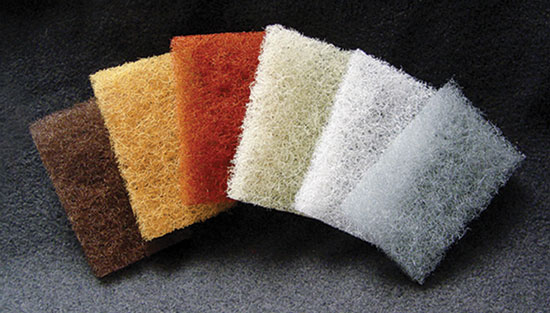Moisture Management in Masonry Buildings
Components of flashing systems
There are several components of a flashing system that needs to be installed and work together for moisture collection. The flashing membrane is the material that extends from the inside to the exterior of the wall system. Mortar collection is a strategy that in the past has been provided by a variety of installation techniques but now can be specified as part of a collection system. In addition, a flashing system includes weep hole vents, termination bars, and drip edges—all of which may be adhered to the wall by screws or adhesives that must be compatible with a variety of materials. The latest flashing systems provide prefabricated corner “boots” and end dams that allow for more precise fittings at different edges and corners of the building. All of these components can be specified in a variety of materials, and weep hole vents and drip edges can also be selected by color. One of the advantages of unitized flashing systems is that these components can be easily coordinated and specified.
Membranes
The choice of the flashing material is important when specifying any flashing system. There is a wide variety of materials to select from for a typical flashing system as well as for a unitized flashing system, including the following products that have been re-engineered to meet higher performance standards. According to Steven Fechino, engineering and construction manager at Mortar Net® USA, Ltd., some of these types of flashing include the following:3
Copper laminate. Copper flashings are one of the oldest of all flashing materials and one of the most permanent. New systems include a laminated mesh of polyethylene on both sides of the copper. This durable product is almost impossible to damage with a trowel during installation. Copper flashing can cause staining on masonry if not properly detailed. Many new copper laminates are compatible with most building products as they do not contain asphalt as a binder.
Stainless steel. This high-end product is usually specified for institutional buildings and those buildings meant to be a legacy for future generations. One of the most expensive flashing materials, installation is labor intensive and requires bending, soldering, mechanical fasteners, and adhesives.
Rubberized asphalt. One of the most common types of flashing used by masons and often is installed with a “peel and stick” placement on the back up wall. The type of primer used with this product as well as proper installation is the key to successful moisture management. It is sensitive to ultra-violet rays and can be damaged if left exposed during construction. Rubberized asphalt can also be incompatible with polyvinyl chloride (PVC) molds used for corners and end dams. The plasticizers in the PVC may leach into the asphalt and reduce the plasticity of the asphalt over time.
 |
Multicolored weep vents blend in and are less noticeable along the face of a building. Photo courtesy of Mortar Net® USA, Ltd. |









